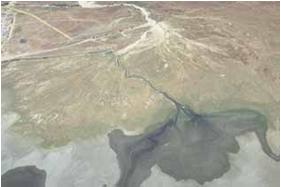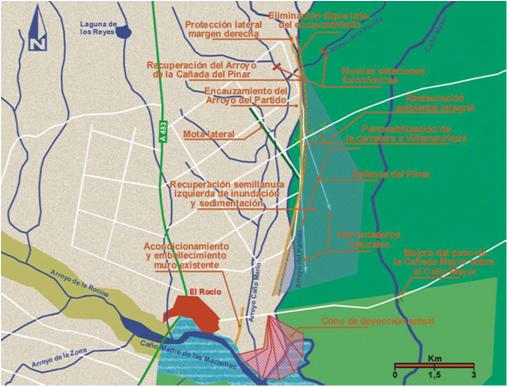Difference between revisions of "DOÑANA/RESTAURACIÓN DEL ARROYO DEL PARTIDO"
(→DOÑANA/RESTAURACIÓN DEL ARROYO DEL PARTIDO) |
(→Monitoring before and after implementation of the project) |
||
| Line 22: | Line 22: | ||
| − | + | The Doñana 2005 programme includes several studies to know the ecosystems´condition before, during and after the actions.Among the studies figure:<br /> | |
| + | :* Hydrogeomorphology<br /> | ||
| + | :* Physical and chemical quality of water and fitozooplankton<br /> | ||
| + | :* Aquatic and terrestial vegetal communities<br /> | ||
| + | :* Estuary and freshwater macroinvertebrates<br /> | ||
| + | :* Vertebrate communities<br /> | ||
| + | |||
| + | These studies started with the first project of the programme and lasted few years after the last one was finished. | ||
==Socio-economic aspects== | ==Socio-economic aspects== | ||
Revision as of 12:18, 8 April 2010
Doñana.El Partido
Key features of the case study
Arroyo del Partido collects water from a watershed of 308 km2 caracterized by a torrential behavior. Land use changes (and agricultural practices)and channelizations have induce problems of erosion, transport and deposition of sand.
Site description
Measures selection
Success criteria
Ecological response
Hydromorphological response
Monitoring before and after implementation of the project
The Doñana 2005 programme includes several studies to know the ecosystems´condition before, during and after the actions.Among the studies figure:
- Hydrogeomorphology
- Physical and chemical quality of water and fitozooplankton
- Aquatic and terrestial vegetal communities
- Estuary and freshwater macroinvertebrates
- Vertebrate communities
- Hydrogeomorphology
These studies started with the first project of the programme and lasted few years after the last one was finished.
Socio-economic aspects
Contact person within the organization
Extra background information
Arroyo del Partido has been channelized its final reach for flood prevention. Removing the wall of the left margin, the expansion will allow the water to recover the original floodplain and restore the alluvial fan at its confluence with the marsh.
The wall of the right margin is maintained and reinforced to protect the strawberry fields and other irrigation farmland.
This action includes forestry and agri-environment measures, including restoration of the stream margins and actions in the alluvial fan to restore the natural appearance.

Aerial view of the alluvial fan previous to the restoration implementation

Map of the main measures
References
Related Measures
- Reduce undesired sediment input
- Reduce erosion
- Remove hard engineering structures that impede lateral connectivity
- Revegetate riparian zones